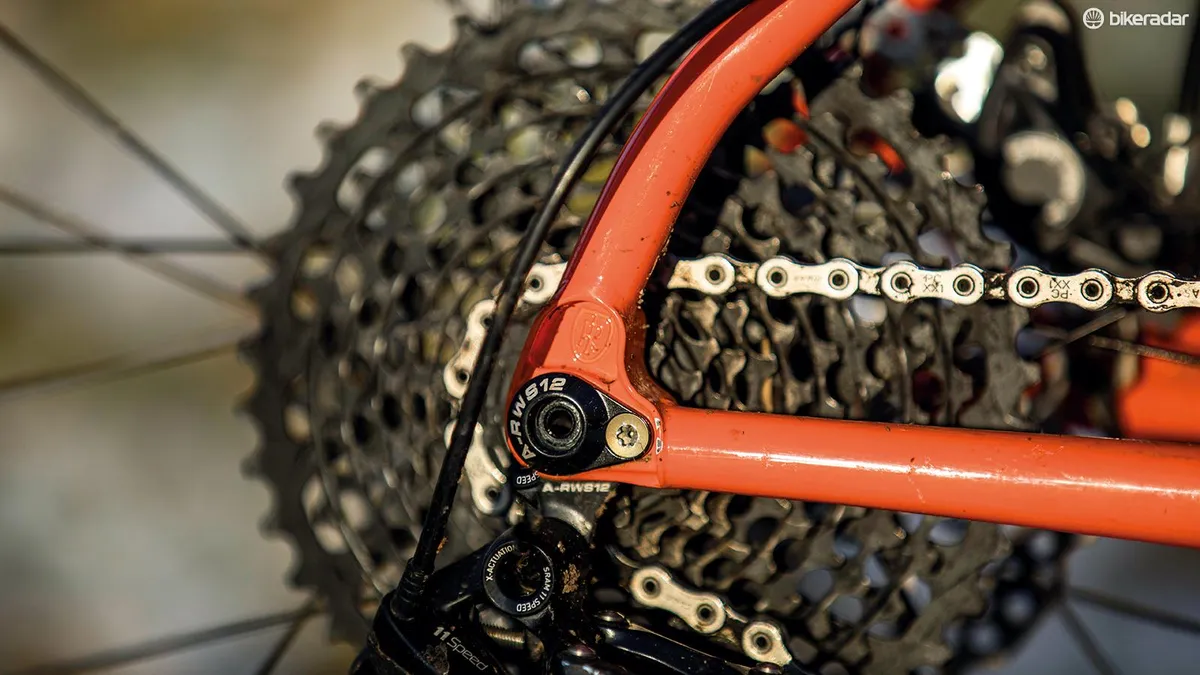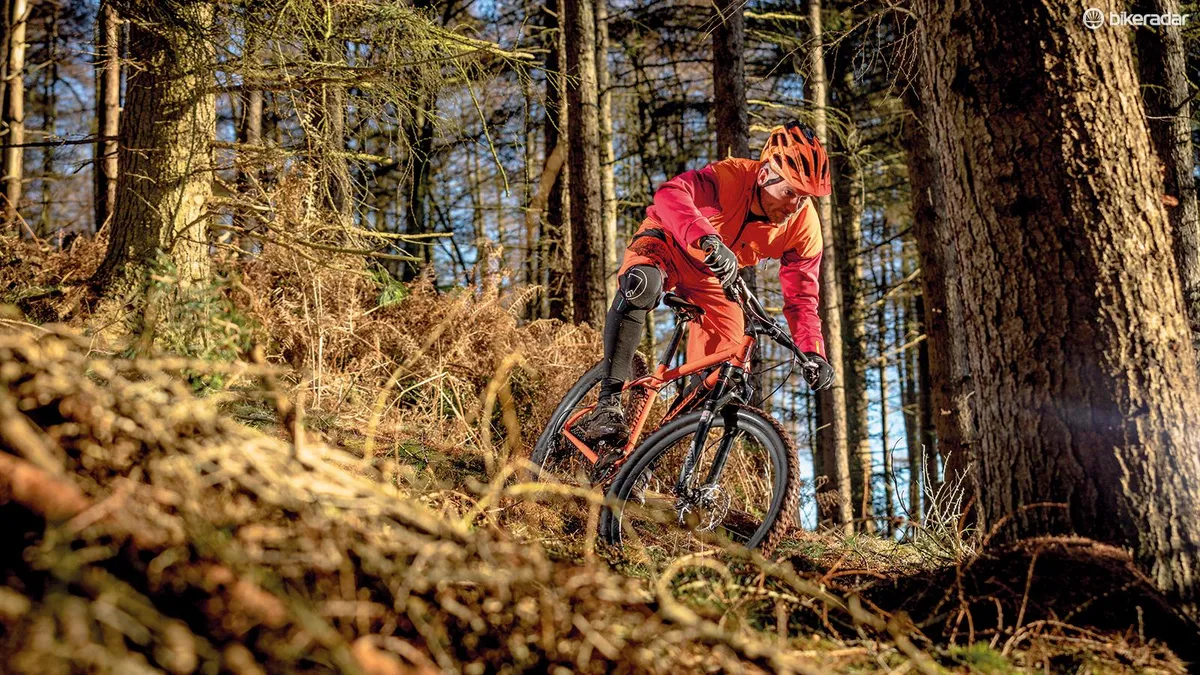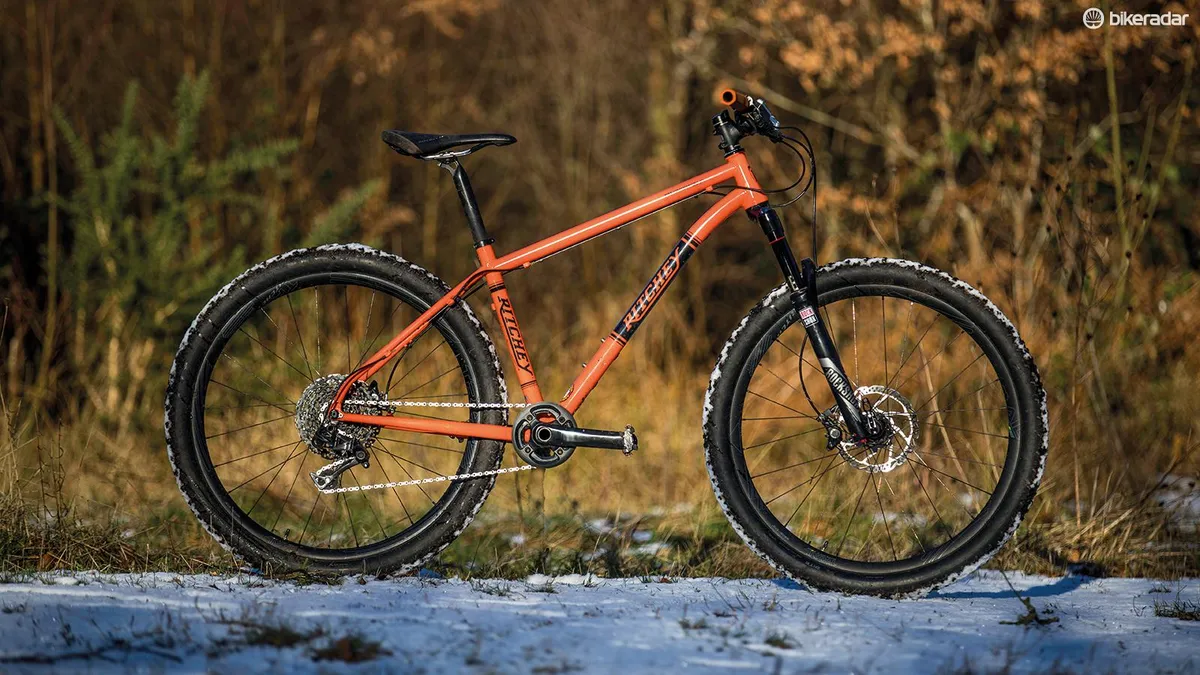Unable to load Media
Ritchey’s new Timberwolf translates its trademark ferrous float into a smooth singletracker that’ll suit traditional handling fans.
Ritchey Timberwolf spec overview
- Frame: ‘WCS Logic’ triple-butted steel
- Fork: RockShox Revelation RL Dual Position Air, 120/150mm (4.7/5.9in) travel
- Drivetrain: SRAM X1 (1x11)
- Wheelset: Ritchey Trail WCS wheels
- Tyres: Ritchey Trail Bite (f) and Trail Drive (r) 27.5x2.25in
- Brakes: Shimano SLX, 180mm rotors
- Bar: Ritchey Trail WCS 35, 780mm
- Stem: Ritchey Trail WCS 35, 70mm
- Seatpost: Ritchey Trail Link rigid
- Saddle: Ritchey Trail WCS
- Weight: 11.77kg (25.95lb), medium size without pedals
Ritchey Timberwolf frame and kit
Tom Ritchey made his name handcrafting steel bikes and the Timberwolf uses the latest incarnation of his triple-butted (three wall thicknesses per tube) ‘Logic’ tubeset.
The metal is carefully manipulated externally too, with the 31mm-diameter top tube and 38mm down tube sharing the same skinny top/fat bottom engineering ethic as the forged and machined head tube, with its accentuated taper and broad top and bottom bearing collars.
The 142x12mm bolt-through rear dropouts can be swapped for quick-release inserts, it’s ready for an internally-routed dropper post and the tiny rear brake mount bridge is a delicious bit of detailing.

Less endearing are the folded metal cable guides, the head tube sticker (rather than badge) and the rub-prone cable routing, especially at £855 for just the frame. At 2.5kg (Ritchey’s figure) it’s not light even by steel standards.
SRAM’s X1 transmission and Shimano’s SLX brakes are functionally fine, and Ritchey’s own-brand kit is light for alloy, but you’d be forgiven for wanting more at this price.
If you know you’re going to spend most of your time in the longer travel setting of the Dual Position Air fork (it can be run at 150mm or 120mm), then a shorter stem would give a better balanced, faster reacting feel.
A faster rear tyre would really open up its lungs too, and a dropper post should definitely be on your upgrade list, which starts to look like a lot of changes on an already expensive bike.
Ritchey Timberwolf ride impression
What you’ll soon realise on the trail, though, is that this isn’t just another hardtail. While you can feel it take up slack in the steel frame at peak torque, it lays that power back down with a muscular flow that adds a palpable stickiness to traction. There’s a release of energy that subtly surges you forwards as you relax pressure on the pedals, if you spin rather than stomp.
This is something that a lot of steel frames claim to deliver but few actually do since tougher CEN safety standards were introduced a few years ago.
That same fluidity gives the bike a superb flow across staccato root and rock sections, which helps it hold speed as well as a decent plus-tyred machine. There’s room in the frame to fit up to 2.4in rubber for an even more floated feel too.

The long, skinny 32mm legs of the Revelation fork flex and twang significantly in 150mm mode, which makes the 120mm setting a better bet in terms of precise control. That means that, while the Timberwolf doesn’t respond well to white knuckle, death grip, pedal smashing riding styles, if you relax enough to let it breathe, that breath will create an obvious tailwind on technical trails.
While it’s always tempting to run as much fork travel as possible, the handling works better in 120mm mode too. That’s because in the 150mm setting the head angle is a slack and stable 66 degrees but the seat angle is a super-slack 70.5.
Reach (386mm on the medium) is very short by the latest standards too. That’s great for popping wheelies and tweaking through super-tight tree lines at lower speeds but you’ll only get the front end to commit into faster corners by deliberately getting forward out of the saddle.
Dropping the fork travel is crucial for keeping the steering connected on steep seated climbs, and if you’re more used to traditional geometry, the shorter setting will feel more natural anyway. It also lets the flow of the tubeset become the dominating positive characteristic that it should be.
Ritchey Timberwolf early verdict
Expensive and not really long-fork happy, but a sweet-flowing example of trad-handling steel.

